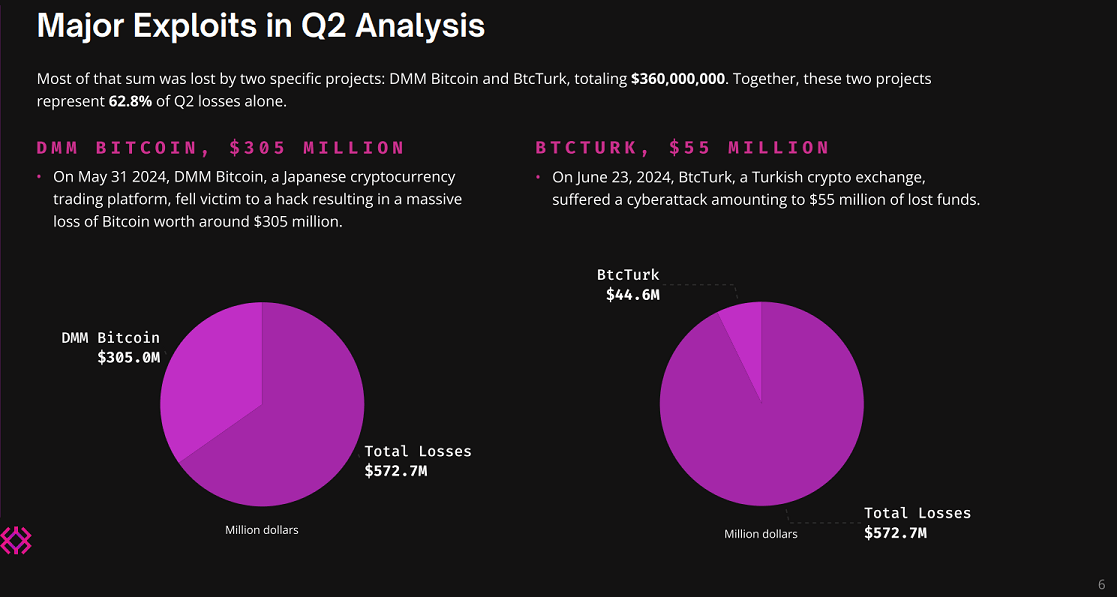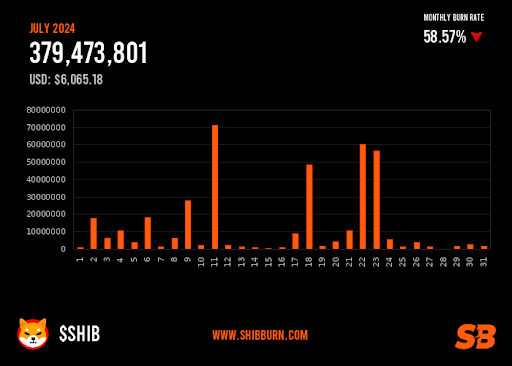The cryptocurrency space faced a turbulent second quarter, with roughly $572.68 million lost to hacks and scams, marking a significant increase from previous periods.
This loss surge represents a 70.3% rise from the first quarter and an alarming 112% increase year-over-year, illustrating a growing trend in digital asset vulnerability.
Analyzing Major Incidents And Security Failures
Data from the web3 bug bounty and security services platform Immunefi paints a grim picture of the current state of crypto security, emphasizing the urgent need for enhanced protective measures across the industry.
Notably, centralized finance (CeFi) platforms bore the brunt of these attacks, accounting for 70% of the total losses. This shift indicates a troubling trend as attackers increasingly target these institutions over decentralized finance (DeFi) networks, which were previously more affected.
The largest incidents included a $305 million exploit of the Japanese cryptocurrency trading platform DMM Bitcoin and a $55 million theft from the Turkish crypto exchange BtcTurk.
Furthermore, May emerged as the most challenging month of the quarter, witnessing the highest losses at $358.5 million. Despite these substantial financial damages, there were minor victories, such as the recovery of $28.7 million, which accounted for only 5% of the total stolen in Q2.
These recoveries occurred across four notable exploits: Bloom, ALEX Lab, Gala Games, and YOLO Games. Mitchell Amador, founder and CEO of Immunefi, highlighted the “devastating” impact of infrastructure compromises, noting that such breaches could lead to significant financial losses, especially when CeFi infrastructure is involved.
The predominant loss mode was via hacks, representing 98.5% of the total financial damages across 53 incidents. In contrast, fraud, scams, and rug pulls accounted for a mere 1.5% of the losses but occurred in 19 incidents.
This disparity points to the technical complexity and scale of hacks compared to traditional deceitful practices within the crypto sector.
Targeted Networks And Emerging Threats
Ethereum and BNB Chain were the most targeted networks during the quarter, continuing the trend from Q1. Ethereum experienced the highest number of individual attacks, with 34 incidents accounting for 46.6% of the total losses on chains, followed by BNB Chain with 18 incidents.
This targeted aggression towards prominent networks highlights the need for ongoing vigilance and enhanced security protocols within these ecosystems.
In addition to these direct financial threats, the rise of deep fake technology presents a new frontier in crypto-related scams. Bitget Research has recently projected that losses due to deep fake scams could soar to over $25 billion by 2024.
Have you ever been caught up in a crypto deepfake scam?
Bitget Research just released a report highlighting that Deepfakes may reach 70% of crypto crimes in two years and annual losses caused by crypto deepfakes may reach $25.13 billion by the end of 2024. pic.twitter.com/xnwj7xFLOy
— Bitget (@bitgetglobal) June 27, 2024
These sophisticated schemes often utilize fake projects, phishing attacks, and Ponzi schemes, exploiting deep fake technology to create an illusion of credibility and mislead investors.
Featured image created with DALL-E, Chart from TradingView
Bitcoinist.comRead More



